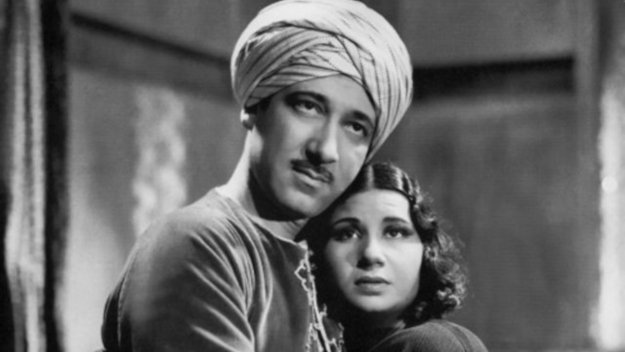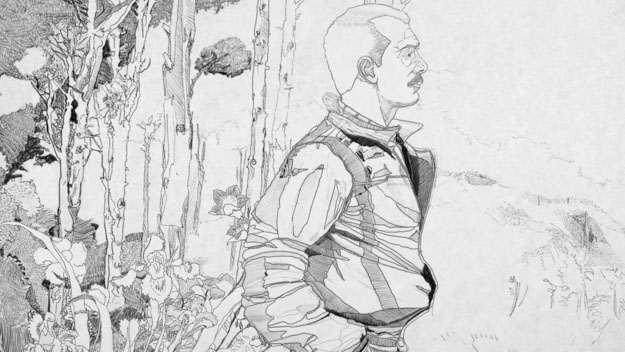Wedad That the 40th edition of the Cairo International Film Festival (CIFF) could not possibly honor the history of Egyptian cinema in full says more about that legacy’s unsung magnificence than any of the festival’s shortcomings. Under new artistic direction this year, the only A-festival in the Arab world advanced its mandate by inaugurating an industry section and attracting a greater number of international journalists. All this at a time when, according to the Egyptian film critic Joseph Fahim, “not since the heyday of the monarchy (the early days of Egyptian cinema in the 1930s and 1940s) has mainstream cinema [in Egypt] become so detached from reality as it is today.” Having not attended the festival’s previous editions, I can’t evaluate the significance of the new course, but Egyptian colleagues and friends both close and not so close to the festival recognized a genuine effort to bring new films to the fore—leaving aside the political implications that all major festivals as a matter of budgetary course have to face. A promising if uneven selection of films from the Arab world and beyond greeted local punters and foreign visitors, who could sift through them looking for discoveries. Although most of the tributes and retrospective screenings of Egyptian classics were not subtitled in English, a large chunk of Egyptian film history was on display in the documentary Into Studio Masr by Mona Assaad. Its chronicle covers the history of Studio Masr—the Egyptian Cinecittà, or Hollywood—starting from its privatization in 2000 and going back to its genesis under British rule. Established in 1935 by the financier Talaat Harb, who had founded Banque Misr in 1920 in a quest for economic sovereignty, Studio Misr was an auxiliary asset in his project of national renaissance and independence. The studio’s first feature-length production, Wedad (1936), starred the singer and national icon Um Kulthum; screened in the 1936 Venice Film Festival, it was directed by the German director Fritz Kamp (Talaat Harb had sent four young men to study cinema in Germany so that they could learn the trade and subsequently launch the studio). Today, the historic studio faces a very uncertain future, but the past of Egyptian cinema is also in peril, most of it already lost due to the lack of film preservation and the deficiencies of film archives. Without absolving the local ruling class of its criminal negligence, it is worth noting that the erasure of cultural memory and consciousness was one of the very pillars of the colonial endeavor. Perhaps the fact that so much of Egypt’s (early) film history is lost or irrevocably damaged, and that the few surviving films are housed in foreign (mostly European) archives, is not entirely coincidental. Egyptian cinema at CIFF was only the epicenter of an overview of international cinema that stretched well beyond the Arab world. While Arab films in the European festival circuit tend to mirror the projected image of a Middle East perpetually at war and inhabited by people waiting to be saved by Western charity, the most interesting films in Cairo defied this narrative trend. Dachra by Abdelhamid Bouchnak, allegedly the first Tunisian horror movie ever made, is a cogent if imperfect attempt at utilizing the tropes of genre filmmaking to dig into the repressed. The film (which had its world premiere in Venice) follows Yasmin, a journalism student, and her two classmates as they set out to solve the mystery surrounding a woman named Mongia, as part of their school assignment. The woman was found mutilated 25 years ago and now, suspected of witchcraft, is confined to an asylum. Their investigation takes them to a remote village in the mountains, Dachra, where a secluded community/sect engages in dubious practices including cannibalism. Through the classical toolkit of horror, Bouchnak anatomizes an entire society, its corporeal taboos and superstitions. According to the Lebanese academic Marwan Kraidy, it was precisely the body that was at the political center of the Arab Springs, and despite the many setbacks and defeats, new generations emerged partially liberated. From this perspective, Bouchnak’s first feature, which cites Psycho and Don’t Look Now but is by no means derivative, acquires an additional dimension. That the first Arab country to rise up in 2010 has now produced its first horror movie is perhaps another coincidence worth investigating. Tunisia has in fact been at the forefront of many aesthetic and political battles: the country abolished slavery, for instance, in 1846, one year before Sweden and two decades before the United States. Students and workers in Tunis rioted on March 1968 two months before the iconic month of May, and the cinematographic struggle against bodily repression has an illustrious predecessor in Tunisian cinema: Nouri Bouzid’s Rih Essed (Man of Ashes, 1986).
Erased, Ascent of the Invisible For this correspondent, the festival served its purpose if only for one, revelatory film that cleared a new path forward into understanding Arab cinema. Bahij Hojeij’s Good Morning is a very small yet immense film, shot in less than three weeks and on a tiny budget. Set in a single location, a Beiruti bar of no exceptional features, the film covers more ground than a road movie and goes far deeper into the Arab world than any “topical” documentary ever could. Two old men meet every morning to read the papers and do the crosswords. They look at the road which the bar overlooks and occasionally turn to look at the television set or to consult the journalist who sits at a table behind them. On this disarmingly simple stage which moves between three different sub-sets—the bar, the streets in front of it and the television set—the director manages to cover a remarkable stretch of Lebanese life and history without compressing or trivializing it. On the contrary, the tactful profundity and bittersweet grace with which even the most painful chapters are narrated is as effortless as it is moving. Because all the splendor and misery of Middle Eastern modernity have at some point or another affected the tormented streets and soul of Beirut, through its prism the history of the whole region is refracted in all its painful luster. Graffiti about the Palestinian poet Mahmoud Darwish goes up one day, and the next day it is vandalized; the architectural beauty of the Lebanese capital is torn down to make way for unaffordable luxury towers destined to remain vacant. Through the crosswords and the conversations the two ageing protagonists occupy themselves with, we learn of the complexity and secular richness of Arab tradition, be it political, cultural or purely quotidian. Without ever forcing anything into the script on onto the actors, the director paints a bucolic Guernica of impressionistic naturalism through which all the pain that traverses the region is sublimated but by no means forgotten. Good Morning is also an indirect testament to the art of daily life and getting by, which the Lebanese excel at. The colors and tones are so different from what Western audiences tend to associate Arab cinema with and yet so much closer to its actual diversity. By a very clever piece of programming, CIFF also showed Dante Lam’s Operation Red Sea, an action flick set in an imaginary Middle Eastern country and spelling out the geopolitical ambitions of the Chinese empire to be. Narrative intricacies and plot refinement are sacrificed in favor of endless if masterfully choreographed action sequences. The bottomline is rather straightforward: where chaos once reigned supreme, the Chinese army will bring security and stability. One can tell how closely has the Chinese film industry learnt Hollywood’s lesson when it comes to global persuasion, enlisting through financial coercion the masters of action cinema (i.e. Hong Kong directors). At times, the muscular didacticism of Operation Red Sea is so heavy-handed that one could almost think Lam is caricaturing the propagandistic message he was tasked with conveying. While the politics of Lam’s film are in your face, those in Ghassan Halwani’s Erased, Ascent of the Invisible are buried under several layers of repressed memory and enforced amnesia. It is literal layers of urban posters that the Lebanese director peels off in the film, so as to give a name and a face to the thousands of people that were disappeared during the Civil War that ripped Lebanon apart and left it laying in fragments. Driven by neither reconciliatory nor resentful intents, Erased exhumes the ghosts of history that haunt the present not to avenge them but to put them to rest. In doing so the director retraces the topography of contemporary Beirut, whose traces of its tormented past neither reconstruction nor gentrification have been able to erase.

